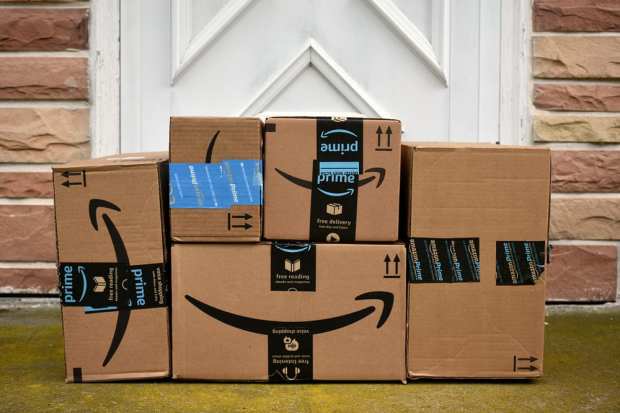Can Predictive Retail Really Take Off?

No one wants to run out of toilet paper.
Not only are there the obvious reasons for wanting to avoid such a compromising situation, but there are also the indirect costs of doing so – the frustration, tension and anxiety when someone in the household has to run a quick errand to replace the product, and, perhaps, the recriminations about who was responsible for letting the supply run out in the first place.
We are gathered here today in discussion of toilet paper because it is one of those daily and vital products that would do well to simply order itself when surpluses dwindle. Consumers might feel creeped out by all those hyper-precise and personalized ads on social media, but how many would mind – really mind – if, because of predictive eCommerce technology, their stocks of toilet paper never ran out? How happy might the world be then, given all those arguments and embarrassing situations avoided?
Amazon’s Lead
The quest to craft a system of commerce that basically ships products to people before they order them – but right as they need them – is nothing new. It has been led, predictably, by Amazon. Recent developments call for a fresh look at the progress being made, and what’s in store, possibly, for predictive ordering capabilities when it comes to retail.
Predictive retail – or what is sometimes called anticipatory shipping – depends on fulfillment prowess, of course. No matter how good the algorithms or artificial intelligence might be, it can all crumble without the right products being stocked at the right time in a warehouse that is close enough to the consumer to offer that just-at-the-perfect-time delivery. And that’s where Amazon is really pulling ahead, as shown by some recent news.
Earlier in June, for instance, the eCommerce operator and logistical powerhouse announced that more than 10 million products are now eligible for free one-day Prime delivery. According to reports, Amazon is loading up the one-day shipping offer with popular items and categories like beauty products, cleaning supplies and beach towels. Ten million is, however, a small serving of the more than 100 million items available for free two-day delivery to Prime members. Company spokeswoman Julie Law said Amazon is seeking the same kind of growth for next-day delivery.
Amazon has also recently put out a call to marketplace sellers – a call backed by what one outlet called “deep” discounts on warehouse costs for those sellers – to store more of their goods in Amazon fulfillment centers. According to the report, “if the plan works as expected, these merchants will sell more stuff and Amazon will be able to promote a large selection of one-day shipping inventory. Plus, consumers will benefit from faster shipping of more products.”
Distribution Power
We at PYMNTS don’t intend to make connections where there are none. That said, the more efficient Amazon makes its warehouses – and the more products it makes available for even quicker shipping – the more power it will accumulate when it comes to anticipatory shipping. It’s not as though Amazon hasn’t thought of this, of course. The eCommerce operator has earned at least one recent patent tied to the promise of that future type of online retail.
According to one summary of that patent, the Amazon technology is “designed to send out products or items to select customers even before they place an order. For the most part, it’s not going to work like you’d expect – the items aren’t being sent directly to customers, but rather to a shipment hub.”
Instead, predictive analytics technology will combine with “a massive trove of Amazon customer data, (and) the anticipatory shipping process will ensure popular items remain in an effective limbo to cut down on fulfillment times. When customers in a particular area order a product, it will be sent from a shipping hub – or where it’s stored on nearby trucks – in a much shorter timeframe. The goods may even be stored on pallets in smaller, strategically placed warehouses until customers are ready to order.”
This envisioned form of retail employs statistics that tell the story of local retail and shopping patterns – based on such variables as weather, income and culture – and seems all but certain to integrate with Amazon’s Alexa technology. That makes sense, of course, because so much of consumers’ needs lie in those daily household goods.
Other Players
Amazon is not the only operation interested in this area of retail.
News recently emerged that Starbucks is teaming up with Microsoft on AI-powered projects that will do everything from gathering customer preferences to connecting coffeemakers. Predictive drive-thru ordering, for example, would give customers recommendations based on order history.
While it’s unknown whether the AI technology will evolve to include facial recognition software or license plate readers that can be used to offer a customer’s favorite order, Microsoft did say that customers will eventually be able to agree to more personalized drive-thru recommendations.
Such projects are a step toward predictive retail.
That said, many challenges remain to arrive at a truly predictive model of retail – the one that seems to read consumers’ minds. The data science, according to reports, is not yet exact, which leaves ample room for mistakes, such as unwanted products going to consumers. The creepiness factor might be in play – already, there is some mounting backlash to voice assistant technology being used inside the home, even as sales of those devices continue to increase.
Still, it’s hard to imagine this effort not progressing, given the fierce competition in retail, the rise of artificial intelligence and the massive amounts of consumer data out there. Who knows? Maybe it will start with products such as toilet paper.
